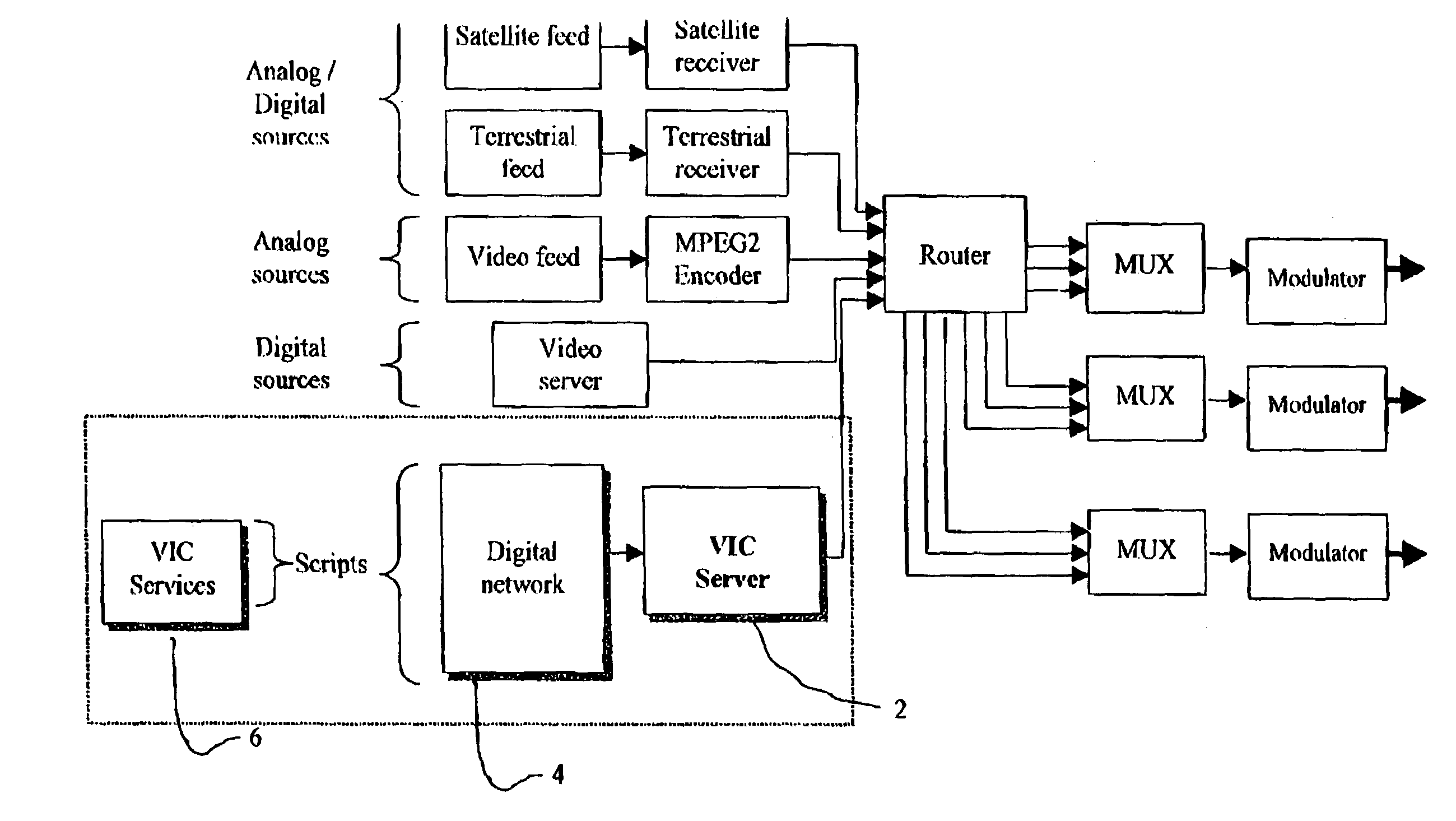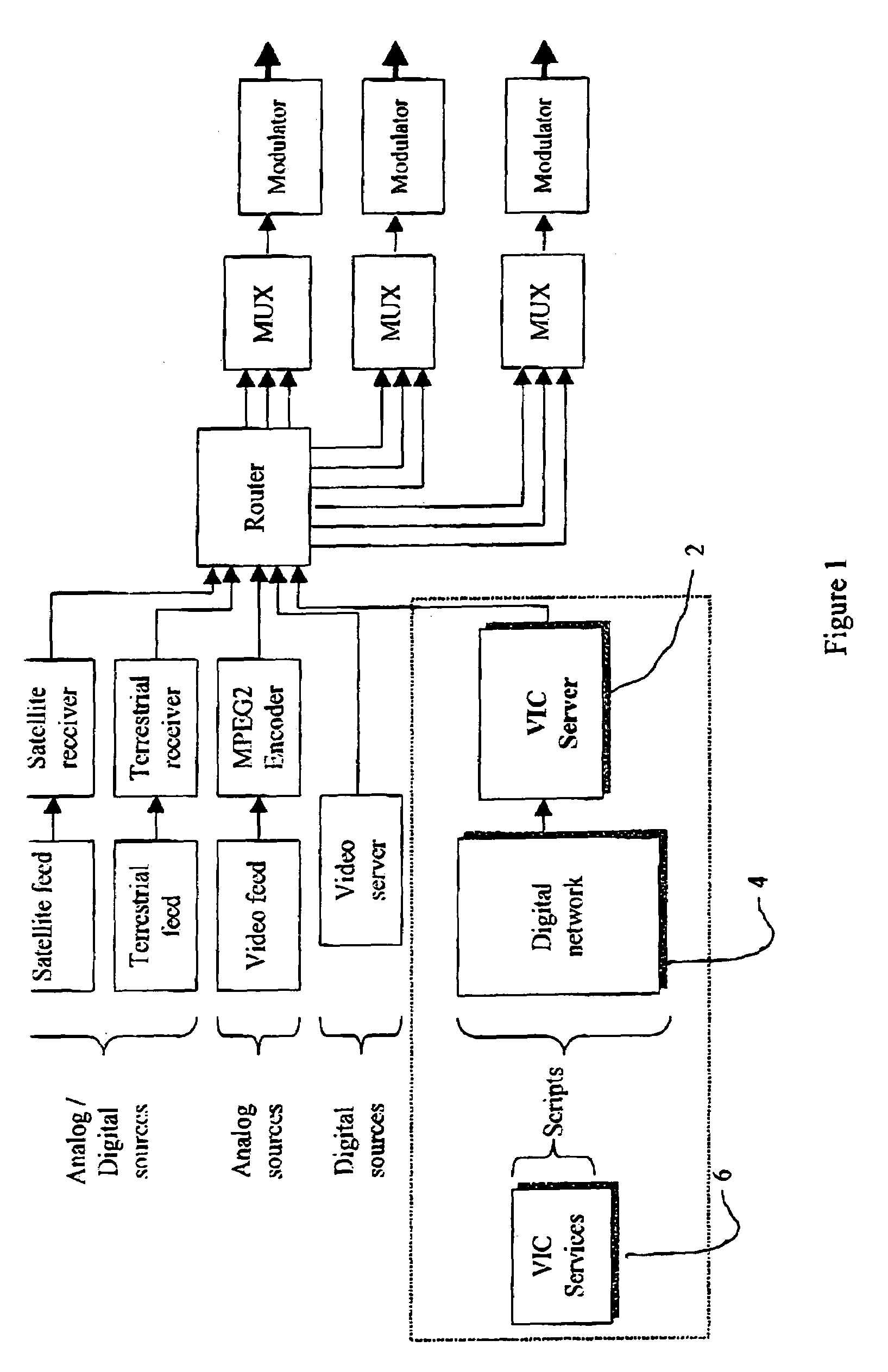Digital video broadcasting
a digital video and broadcasting technology, applied in the field of digital video broadcasting, can solve the problems of large data loss, high distortion of video images of at least some programs, spatial and temporal, etc., and achieve the effects of avoiding quantization noise, increasing potential compression, and great flexibility in scheduling
- Summary
- Abstract
- Description
- Claims
- Application Information
AI Technical Summary
Benefits of technology
Problems solved by technology
Method used
Image
Examples
Embodiment Construction
[0065]The method and apparatus of the present invention will be described hereunder in the context of a typical head-end of a digital video cable system. This is done by way of illustrative example and not to limit the scope of the invention. Application of the invention to other digital video broadcast systems should be possible with minor modifications, obvious to practitioners of the art.
[0066]FIG. 1 shows schematically a VIC Server 2 (within the shaded area), which embodies the present invention, connected to the router of the exemplary head-end of a digital cable system, to input a transport stream thereto, alongside conventional inputs as discussed in the Background section above. FIG. 2 shows an overall block diagram of a preferred embodiment of VIC Server 2 according to the present invention. It consists largely of an Input module 10, a Process module (PM) 40, an Output module 20 and a System Controller 30.
[0067]Input module 10 of VIC Server 2 communicates with all sources o...
PUM
 Login to View More
Login to View More Abstract
Description
Claims
Application Information
 Login to View More
Login to View More - R&D
- Intellectual Property
- Life Sciences
- Materials
- Tech Scout
- Unparalleled Data Quality
- Higher Quality Content
- 60% Fewer Hallucinations
Browse by: Latest US Patents, China's latest patents, Technical Efficacy Thesaurus, Application Domain, Technology Topic, Popular Technical Reports.
© 2025 PatSnap. All rights reserved.Legal|Privacy policy|Modern Slavery Act Transparency Statement|Sitemap|About US| Contact US: help@patsnap.com



